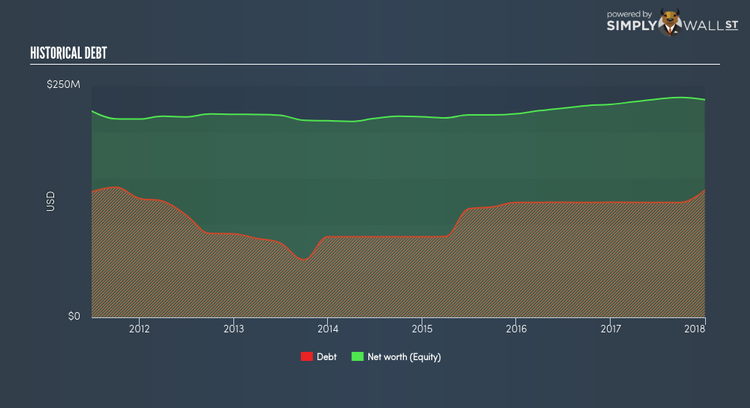How Did Territorial Bancorp Inc’s (NASDAQ:TBNK) 6.37% ROE Fare Against The Industry?

With an ROE of 6.37%, Territorial Bancorp Inc (NASDAQ:TBNK) outpaced its own industry which delivered a less exciting 5.08% over the past year. Superficially, this looks great since we know that TBNK has generated big profits with little equity capital; however, ROE doesn’t tell us how much TBNK has borrowed in debt. Today, we’ll take a closer look at some factors like financial leverage to see how sustainable TBNK’s ROE is. See our latest analysis for Territorial Bancorp
Breaking down Return on Equity
Return on Equity (ROE) weighs Territorial Bancorp’s profit against the level of its shareholders’ equity. An ROE of 6.37% implies $0.06 returned on every $1 invested. Generally speaking, a higher ROE is preferred; however, there are other factors we must also consider before making any conclusions.
Return on Equity = Net Profit ÷ Shareholders Equity
ROE is assessed against cost of equity, which is measured using the Capital Asset Pricing Model (CAPM) – but let’s not dive into the details of that today. For now, let’s just look at the cost of equity number for Territorial Bancorp, which is 9.38%. This means Territorial Bancorp’s returns actually do not cover its own cost of equity, with a discrepancy of -3.00%. This isn’t sustainable as it implies, very simply, that the company pays more for its capital than what it generates in return. ROE can be split up into three useful ratios: net profit margin, asset turnover, and financial leverage. This is called the Dupont Formula:
Dupont Formula
ROE = profit margin × asset turnover × financial leverage
ROE = (annual net profit ÷ sales) × (sales ÷ assets) × (assets ÷ shareholders’ equity)
ROE = annual net profit ÷ shareholders’ equity
The first component is profit margin, which measures how much of sales is retained after the company pays for all its expenses. Asset turnover reveals how much revenue can be generated from Territorial Bancorp’s asset base. And finally, financial leverage is simply how much of assets are funded by equity, which exhibits how sustainable the company’s capital structure is. Since financial leverage can artificially inflate ROE, we need to look at how much debt Territorial Bancorp currently has. The debt-to-equity ratio currently stands at a sensible 58.42%, meaning the above-average ROE is due to its capacity to produce profit growth without a huge debt burden.
Next Steps:
ROE is a simple yet informative ratio, illustrating the various components that each measure the quality of the overall stock. Territorial Bancorp exhibits a strong ROE against its peers, however it was not high enough to cover its own cost of equity this year. ROE is not likely to be inflated by excessive debt funding, giving shareholders more conviction in the sustainability of industry-beating returns. Although ROE can be a useful metric, it is only a small part of diligent research.
For Territorial Bancorp, there are three fundamental aspects you should further examine:
Financial Health: Does it have a healthy balance sheet? Take a look at our free balance sheet analysis with six simple checks on key factors like leverage and risk.
Valuation: What is Territorial Bancorp worth today? Is the stock undervalued, even when its growth outlook is factored into its intrinsic value? The intrinsic value infographic in our free research report helps visualize whether Territorial Bancorp is currently mispriced by the market.
Other High-Growth Alternatives : Are there other high-growth stocks you could be holding instead of Territorial Bancorp? Explore our interactive list of stocks with large growth potential to get an idea of what else is out there you may be missing!
To help readers see pass the short term volatility of the financial market, we aim to bring you a long-term focused research analysis purely driven by fundamental data. Note that our analysis does not factor in the latest price sensitive company announcements.
The author is an independent contributor and at the time of publication had no position in the stocks mentioned.


